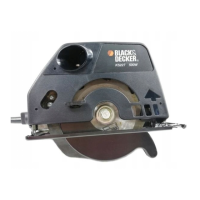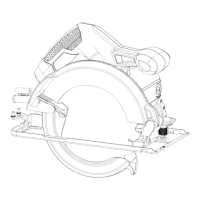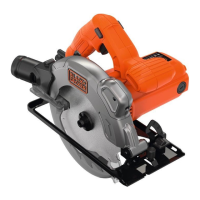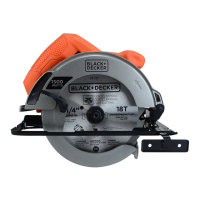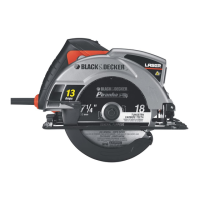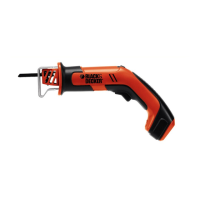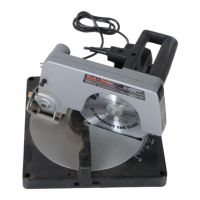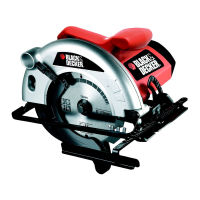
Do you have a question about the Black & Decker CD601 and is the answer not in the manual?
| Input power | 1100 W |
|---|---|
| Cable length | 2 m |
| Power source | AC |
| AC input voltage | 230 V |
| Blade bore | 16 mm |
| Blade diameter | 170 mm |
| Idle speed (max) | 5000 RPM |
| Cutting depth (45º) | 42 mm |
| Cutting depth (90º) | 55 mm |
| Carrying case | No |
Read all safety warnings and instructions to prevent electric shock, fire, and serious injury.
Keep work area clean, well-lit, and free from children/bystanders. Avoid explosive atmospheres.
Ensure correct plugs, avoid earthed surfaces, protect from wet conditions, and use outdoor extension cords.
Stay alert, wear eye protection, prevent unintentional starting, and keep loose items away from moving parts.
Do not force the tool, use it correctly, maintain it, and store it safely away from children.
Maintain sharp cutting edges for better control and reduced binding. Use tool per instructions.
Have power tool serviced by a qualified person using identical replacement parts for continued safety.
Additional safety warnings for saws, focusing on hand placement, workpiece support, and blade usage.
Instructions for preventing kickback, including grip, blade binding, and supporting large panels.
Check lower guard function, ensure spring operation, and retract manually only for special cuts.
Use correct riving knife, adjust it properly, and always use it except for plunge cutting.
Identifies inherent risks like hearing impairment, injuries from rotating parts, and dust hazards.
Use only recommended blade diameters and types, complying with EN 847-1. Never use abrasive wheels.
Wear ear protection. Appliance not for unsupervised use by children or persons with reduced capabilities.
Details declared vibration emission values and how to assess exposure during actual tool use.
Pictograms on the tool indicate the need to read the instruction manual for safe operation.
Procedure for removing and fitting a saw blade using the spindle locking hole.
Procedure for changing blades without a spindle locking hole, using wood for support.
How to adjust the riving knife for rip sawing, ensuring a 2-3 mm distance from the blade.
Instructions for fitting and removing the parallel fence for straight line cuts parallel to the edge.
How to set the cutting depth according to workpiece thickness, exceeding it by approx. 2 mm.
How to set mitre angles between 0° and 45° using the shoe adjustment scale.
Procedure for switching the tool on using the lock-off button and squeeze switch, and switching off.
Tips for sawing, including holding the tool with both hands and applying gentle pressure.
How to connect a vacuum cleaner or dust extractor using the provided adaptor.
